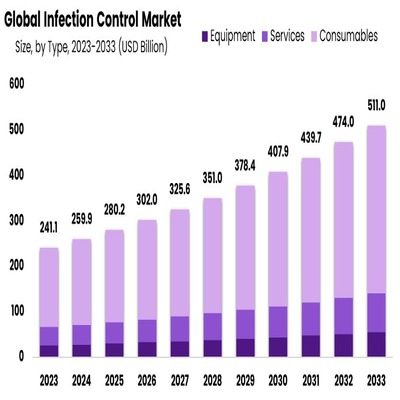Sessions & Tracks
Track-1: Infection Prevention and Control
Infection Prevention and Control (IPC) is crucial for safeguarding health in healthcare settings and communities. Key elements include hand hygiene, use of PPE, sterilization, vaccination, antibiotic stewardship, and continuous education. Effective IPC practices reduce the risk of infection spread, protect patients and healthcare workers, and save lives. By adhering to evidence-based strategies, IPC plays a vital role in maintaining public health, especially during outbreaks and pandemics.
Related Associations: Infection Prevention Society, American Society of Microbiology, The Japanese Association for Infectious Diseases, Infectious Diseases Society of America, Korean Association of Infection Disease Prevention, Canadian Society for Immunology.
Track-2: Covid_19 Infections
COVID-19, caused by the SARS-CoV-2 virus, emerged in late 2019, rapidly escalating into a global pandemic. Characterized by symptoms ranging from mild respiratory issues to severe pneumonia, the virus spreads primarily through respiratory droplets. Key prevention measures include vaccination, wearing masks, maintaining social distance, and practicing good hand hygiene. The pandemic has significantly impacted global health systems, economies, and daily life, highlighting the critical importance of robust infection control practices and international cooperation in public health.
Related Associations: Healthcare Infection Society, European Society of Clinical Microbiology and Infectious Diseases, American Society of Infection Prevention, Asia Pacific Society of Infection Control, International AIDS Society, Pediatric Infectious Disease Society of Thailand.
Track-3: Causes and Symptoms of Infections
Causes: Infections are caused by various pathogens including bacteria, viruses, fungi, and parasites. They can enter the body through cuts, inhalation, ingestion, or contact with contaminated surfaces.
Symptoms: Common symptoms of infections include fever, chills, fatigue, muscle aches, and localized pain or inflammation. Specific symptoms depend on the type and location of the infection, such as coughing for respiratory infections or diarrhoea for gastrointestinal infections. Prompt diagnosis and treatment are essential for effective management.
Related Associations: British Society of Parasitology, Surgical Infection Society, European Association of Infection Control, Texas Society of Infection Prevention and Control, National Association of Infection Prevention and Control, Infection Control Association, Australasian Society for Infectious Diseases, Chinese Society for Immunology.
Track-4: Neuro Infections
Neuro infections are those that affect the nervous system, including the brain and spinal cord. They can be caused by viruses, bacteria, fungi, or parasites and may result in a range of symptoms such as headache, fever, confusion, seizures, and neurological deficits. Common Neuro infections include meningitis, encephalitis, and brain abscesses. Prompt diagnosis and treatment are essential to prevent serious complications and long-term neurological damage. Management often involves a combination of antimicrobial therapy, supportive care, and, in severe cases, neurosurgical intervention. Early recognition and appropriate treatment are crucial for optimal outcomes in neuro infection cases.
Related Associations: Infection Prevention Society, The Japanese Association for Infectious Diseases, Healthcare Infection Society, European Society of Clinical Microbiology and Infectious Diseases, Surgical Infection Society, European Association of Infection Control.
Track-5: Infection Control Procedures
Infection control procedures are vital measures implemented to prevent the spread of infections in healthcare settings and beyond. These procedures encompass various practices such as hand hygiene, proper use of personal protective equipment (PPE), sterilization and disinfection of medical equipment and surfaces, and adherence to isolation protocols for contagious patients. Regular training, surveillance, and monitoring of infection rates are also integral parts of infection control. By rigorously following these procedures, healthcare facilities can minimize the risk of healthcare-associated infections and safeguard the health and safety of patients, healthcare workers, and the community.
Related Associations: Australasian Society for Infectious Diseases, Chinese Society for Immunology, British Society of Parasitology, Korean Association of Infection Disease Prevention, National Association of Infection Prevention and Control, Association of Infection Control.
Track-6: Global Trends in Emerging Infections
Emerging infections are continually evolving threats to global health, with trends shaped by various factors including population growth, urbanization, travel, and climate change. Key trends include the emergence of novel pathogens, the re-emergence of previously controlled diseases, antimicrobial resistance, and the impact of environmental changes on disease spread. Rapid globalization facilitates the rapid dissemination of infectious agents, necessitating enhanced surveillance, preparedness, and collaboration among nations. Understanding and monitoring these trends are crucial for effective prevention and control strategies to mitigate the impact of emerging infections on public health worldwide.
Related Associations: Surgical Infection Society, European Association of Infection Control, Canadian Society for Immunology, Pediatric Infectious Disease Society of Thailand, Asia Pacific Society of Infection Control, , European Society of Clinical Microbiology and Infectious Diseases.
Track-7: Epidemiology
Epidemiology is the study of patterns, causes, and effects of health and disease conditions in defined populations. It encompasses various methods to identify factors impacting public health, such as disease outbreaks, risk factors, and preventive measures. By analysing data, epidemiologists contribute to understanding disease transmission, informing healthcare policies, and improving public health interventions, ultimately aiming to enhance community well-being.
Related Associations: Infection Prevention Society, American Society of Microbiology, The Japanese Association for Infectious Diseases, Infectious Diseases Society of America, Korean Association of Infection Disease Prevention, Canadian Society for Immunology.
Track-8: Infection Control in Critical Care
Infection control in critical care settings is paramount to safeguarding vulnerable patients from healthcare-associated infections. These environments, often housing patients with compromised immune systems, require rigorous protocols including stringent hand hygiene, meticulous environmental cleaning, and proper use of personal protective equipment. Additionally, surveillance for infections, antimicrobial stewardship, and adherence to isolation precautions are essential practices to minimize the risk of transmission. Effective infection control measures not only protect patients but also contribute to improved outcomes and reduced healthcare costs in critical care settings.
Related Associations: Healthcare Infection Society, European Society of Clinical Microbiology and Infectious Diseases, American Society of Infection Prevention, Asia Pacific Society of Infection Control, International AIDS Society, Pediatric Infectious Disease Society of Thailand
Track-9: Emerging and Re-Emerging Infections
Emerging and re-emerging infections pose ongoing challenges to global public health. These diseases, often caused by novel pathogens or the resurgence of previously controlled ones, continually evolve due to factors such as population growth, urbanization, travel, and environmental changes. Examples include Ebola, Zika, and drug-resistant tuberculosis. Vigilant surveillance, rapid response mechanisms, and international collaboration are crucial in combating these threats and preventing potential pandemics. By monitoring and understanding emerging and re-emerging infections, public health authorities can better implement strategies to mitigate their impact and protect populations worldwide.
Related Associations: British Society of Parasitology, Surgical Infection Society, European Association of Infection Control, Texas Society of Infection Prevention and Control, National Association of Infection Prevention and Control, Infection Control Association, Australasian Society for Infectious Diseases, Chinese Society for Immunology.
Track-10: Hepatitis Prevention
Hepatitis prevention is vital for reducing the burden of this viral infection worldwide. Effective prevention strategies include vaccination, practicing safe injection practices, and ensuring blood and blood products are screened for hepatitis viruses. Additionally, promoting safe sex practices, avoiding sharing personal items such as razors or toothbrushes, and implementing proper infection control measures in healthcare settings are essential. Public awareness campaigns play a crucial role in educating individuals about hepatitis transmission routes and prevention methods, contributing to efforts to curb the spread of this disease.
Related Associations: Infection Prevention Society, The Japanese Association for Infectious Diseases, Healthcare Infection Society, European Society of Clinical Microbiology and Infectious Diseases, Surgical Infection Society, European Association of Infection Control.
Track-11: Immunizations and Vaccination
Immunizations and vaccinations are crucial tools in preventing infectious diseases and protecting public health. By administering vaccines, individuals develop immunity to specific pathogens, reducing the risk of infection and transmission. Vaccination programs have significantly decreased the prevalence of once-common diseases such as measles, polio, and smallpox. They not only safeguard individuals but also contribute to community immunity, protecting vulnerable populations. Continuous research and public education efforts are essential in promoting vaccine acceptance and maintaining high vaccination coverage rates to prevent outbreaks and achieve disease control.
Related Associations: Australasian Society for Infectious Diseases, Chinese Society for Immunology, British Society of Parasitology, Korean Association of Infection Disease Prevention, National Association of Infection Prevention and Control, Association of Infection Control.
Track-12: Bacterial, Parasitic and Fungal Infections
Bacterial, parasitic, and fungal infections represent diverse threats to human health. Bacterial infections, caused by various bacteria such as E. coli or Staphylococcus aureus, range from mild ailments to life-threatening conditions. Parasitic infections, like malaria or giardiasis, are caused by protozoa or helminths and often affect the digestive or circulatory systems. Fungal infections, such as candidiasis or athlete's foot, thrive in warm, moist environments and can affect the skin, nails, or internal organs. Effective treatment often depends on accurate diagnosis and targeted antimicrobial therapy or antifungal medications.
Related Associations: Healthcare Infection Society, European Society of Clinical Microbiology and Infectious Diseases, American Society of Infection Prevention, Asia Pacific Society of Infection Control, International AIDS Society, Pediatric Infectious Disease Society of Thailand.
Track-13: Viral Infections and Recent Advancements
Viral infections pose significant global health challenges, ranging from the common cold to severe diseases like HIV/AIDS and COVID-19. Recent advancements in virology and medical research have led to breakthroughs in antiviral therapies, vaccine development, and diagnostic technologies. For instance, mRNA vaccine technology has revolutionized vaccine production, enabling rapid responses to emerging viral threats like the SARS-CoV-2 virus. Additionally, novel antiviral drugs and monoclonal antibodies show promise in treating viral infections, offering hope for improved patient outcomes and pandemic control measures.
Related Associations: Infection Prevention Society, Healthcare Infection Society, British Society of Parasitology, American Society of Microbiology, European Society of Clinical Microbiology and Infectious Diseases, Surgical Infection Society.
Track-14: Blood Borne Infections/Sepsis/Septicaemia
Blood-borne infections such as sepsis or septicaemia occur when pathogens enter the bloodstream, leading to systemic infection and potentially life-threatening complications. Sepsis is a severe response to infection, triggering inflammation throughout the body and causing organ dysfunction. Early recognition and prompt treatment with antibiotics and supportive care are crucial in managing sepsis and preventing adverse outcomes. Timely interventions, including fluid resuscitation and vasopressor therapy, can improve survival rates and reduce the long-term effects of sepsis.
Related Associations: The Japanese Association for Infectious Diseases, Infectious Diseases Society of America, American Society of Infection Prevention, Asia Pacific Society of Infection Control, European Association of Infection Control, Texas Society of Infection Prevention and Control.
Track-15: Nosocomial Infections and Control
Nosocomial infections, also known as healthcare-associated infections (HAIs), are infections acquired during a hospital stay or healthcare-related procedures. These infections pose a significant threat to patient safety and can result from various factors, including inadequate hand hygiene, contaminated medical equipment, and antibiotic resistance. Implementing robust infection control measures such as strict hand washing protocols, proper sterilization of equipment, and effective antimicrobial stewardship programs is essential in preventing and controlling nosocomial infections, ultimately safeguarding patient health and reducing healthcare costs.
Related Associations: Korean Association of Infection Disease Prevention, Canadian Society for Immunology, International AIDS Society, Pediatric Infectious Disease Society of Thailand, National Association of Infection Prevention and Control, Infection Control Association.
Track-16: Diagnosis Of infectious Diseases
Diagnosis of infectious diseases relies on various methods, including clinical evaluation, laboratory tests, and imaging studies. Healthcare professionals assess symptoms, medical history, and risk factors to guide diagnostic decisions. Laboratory tests such as blood cultures, viral cultures, PCR assays, and serological tests aid in identifying the causative pathogens. Imaging techniques like X-rays, CT scans, and MRIs help visualize internal abnormalities associated with certain infections. Timely and accurate diagnosis is crucial for initiating appropriate treatment and preventing the spread of infectious diseases.
Related Associations: Australasian Society for Infectious Diseases, Chinese Society for Immunology, Infection Prevention Society, American Society of Microbiology, Healthcare Infection Society, European Society of Clinical Microbiology and Infectious Diseases.
Track-17: Gastrointestinal and Urinary Tract Infections
Gastrointestinal and urinary tract infections are common ailments affecting the digestive and urinary systems, respectively. Gastrointestinal infections, often caused by bacteria or viruses, lead to symptoms like diarrhoea, nausea, and abdominal pain. Urinary tract infections (UTIs), typically caused by bacteria such as Escherichia coli, result in symptoms such as frequent urination, burning sensation, and lower abdominal discomfort. Prompt diagnosis and treatment with antibiotics are essential in managing these infections and preventing complications.
Related Associations: British Society of Parasitology, Surgical Infection Society, The Japanese Association for Infectious Diseases, Infectious Diseases Society of America, American Society of Infection Prevention, Asia Pacific Society of Infection Control.
Track-18: Respiratory Infectious Diseases and Therapy
Respiratory infectious diseases encompass a broad range of illnesses affecting the respiratory system, from the common cold to severe pneumonia and influenza. Treatment options vary depending on the specific pathogen and severity of the infection but often include antiviral or antibiotic therapy, supportive care, and symptom management. In recent years, advancements in respiratory therapy have included the development of targeted antiviral medications and the use of monoclonal antibodies to combat respiratory viruses, contributing to improved outcomes for patients.
Related Associations: European Association of Infection Control, Texas Society of Infection Prevention and Control, Korean Association of Infection Disease Prevention, Canadian Society for Immunology, American Society of Infection Prevention, Asia Pacific Society of Infection Control.
Track-19: Antimicrobial Stewardship/Antimicrobial Resistance
Antimicrobial stewardship is a vital strategy aimed at optimizing the use of antimicrobial agents to preserve their effectiveness and minimize the development of antimicrobial resistance. This approach involves implementing guidelines and interventions to ensure appropriate antimicrobial prescribing, including dose optimization, duration of therapy, and selection of the most effective agent. By promoting responsible antimicrobial use, antimicrobial stewardship programs help mitigate the spread of antimicrobial-resistant infections, preserving the efficacy of antimicrobial agents for future generations.
Related Associations: National Association of Infection Prevention and Control, Infection Control Association, Infection Prevention Society, American Society of Microbiology, International AIDS Society, Pediatric Infectious Disease Society of Thailand.
Track-20: Plants Diseases and Infection Control
Plant diseases pose significant threats to agricultural productivity and food security worldwide. Effective infection control strategies include cultural practices such as crop rotation, sanitation, and use of disease-resistant cultivars. Additionally, integrated pest management techniques, biological controls, and application of fungicides or bactericides help manage plant diseases. Early detection through surveillance and rapid response measures are crucial for preventing disease outbreaks and minimizing crop losses, ensuring sustainable agricultural production.
Related Associations: Australasian Society for Infectious Diseases, Chinese Society for Immunology, The Japanese Association for Infectious Diseases, Infectious Diseases Society of America, Healthcare Infection Society, European Society of Clinical Microbiology and Infectious Diseases.
Track-21: Ophthalmological Infections
Ophthalmological infections encompass a range of microbial conditions affecting the eye, including conjunctivitis, keratitis, and endophthalmitis. Bacterial, viral, and fungal agents can cause these infections, often leading to symptoms like redness, discharge, and impaired vision. Prompt diagnosis and appropriate treatment are crucial to prevent complications such as corneal scarring or vision loss. Proper hygiene and avoidance of contaminated materials are key in preventing the spread of these infections.
Related Associations: British Society of Parasitology, Surgical Infection Society, Korean Association of Infection Disease Prevention, Canadian Society for Immunology, American Society of Infection Prevention, Asia Pacific Society of Infection Control.
Track-22: Tropical diseases
Tropical diseases, prevalent in regions with warm climates, pose significant health challenges worldwide. These diseases, including malaria, dengue fever, and Zika virus, are often transmitted by insects like mosquitoes or through contaminated water sources. Symptoms range from mild to severe, and in some cases, can be fatal if left untreated. Prevention strategies such as vector control, vaccination, and sanitation are essential in combating the spread of tropical diseases and reducing their impact on vulnerable populations.
Related Associations: European Association of Infection Control, Texas Society of Infection Prevention and Control, Infection Prevention Society, American Society of Microbiology, International AIDS Society, Pediatric Infectious Disease Society of Thailand.
Track-23: Paediatric Infectious Diseases
Paediatric infectious diseases are illnesses primarily affecting infants, children, and adolescents, caused by bacteria, viruses, parasites, or fungi. Common examples include respiratory infections like pneumonia, gastrointestinal infections such as rotavirus, and vaccine-preventable diseases like measles. Diagnosis often requires specialized paediatric care due to unique symptoms and treatment considerations. Timely vaccination, hygiene practices, and public health interventions are critical in safeguarding children from these infections and minimizing their impact on health outcomes.
Related Associations: National Association of Infection Prevention and Control, Infection Control Association, The Japanese Association for Infectious Diseases, Infectious Diseases Society of America, Healthcare Infection Society, European Society of Clinical Microbiology and Infectious Diseases.
Track-24: Sexually Transmitted Diseases
Sexually transmitted diseases (STDs) are infections transmitted through sexual contact. Common STDs include chlamydia, gonorrhea, syphilis, and HIV/AIDS. These diseases can have serious health consequences if not diagnosed and treated early. Prevention measures such as practicing safe sex, using condoms, and getting tested regularly are crucial in controlling the spread of STDs and promoting sexual health. Early detection and treatment are essential for reducing the risk of complications and preventing further transmission.
Related Associations: Australasian Society for Infectious Diseases, Chinese Society for Immunology, Korean Association of Infection Disease Prevention, Canadian Society for Immunology, American Society of Infection Prevention, Asia Pacific Society of Infection Control
Track-25: Veterinary Diseases
Veterinary diseases affect animals, posing risks to both animal welfare and public health. Common examples include rabies, foot-and-mouth disease, and avian influenza. These diseases can spread rapidly among livestock populations, leading to economic losses and potential zoonotic transmission to humans. Effective disease surveillance, vaccination programs, and biosecurity measures are crucial for controlling and preventing the spread of veterinary diseases, safeguarding both animal and human health.
Related Associations: British Society of Parasitology, Surgical Infection Society, European Association of Infection Control, Texas Society of Infection Prevention and Control, National Association of Infection Prevention and Control, Infection Control Association, Australasian Society for Infectious Diseases, Chinese Society for Immunology.
Track-26: Surgical Site Infections
Surgical site infections (SSIs) are complications that occur after surgery, typically within 30 days post-operation. These infections can involve the skin, underlying tissue, or organs and are caused by bacteria entering the incision site. SSIs can prolong hospital stays, increase healthcare costs, and even result in mortality. Preventive measures like proper sterilization techniques, antibiotic prophylaxis, and adherence to infection control protocols are crucial in reducing the incidence of SSIs and ensuring optimal patient outcomes.
Related Associations: Infection Prevention Society, American Society of Microbiology, The Japanese Association for Infectious Diseases, Infectious Diseases Society of America, Korean Association of Infection Disease Prevention, Canadian Society for Immunology.
Track-27: Rare Infectious Diseases
Rare infectious diseases, though infrequent, present significant challenges due to their complexity and often unknown etiology. These conditions, such as Creutzfeldt-Jakob disease, Ebola virus disease, and Hantavirus infection, can have severe consequences for affected individuals and communities. Due to their rarity, diagnosis and treatment can be particularly challenging, requiring specialized expertise and resources. Vigilance in surveillance, research, and international collaboration is essential in addressing these uncommon but impactful diseases.
Related Associations: Healthcare Infection Society, European Society of Clinical Microbiology and Infectious Diseases, American Society of Infection Prevention, Asia Pacific Society of Infection Control, International AIDS Society, and Pediatric Infectious Disease Society of Thailand.















